These women tackle science in the lab, classroom and far, far beyond
Meet women in science studying dead bodies, finding new fuels and more
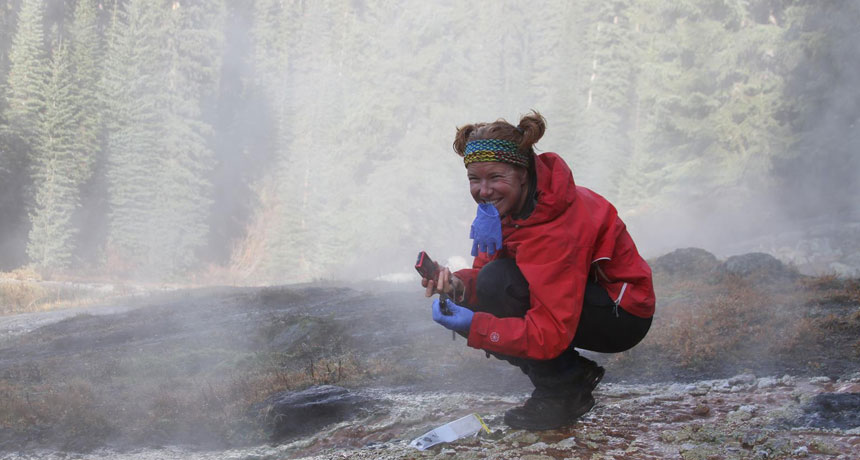
Christine Sharp prepares to snap a photo as she works in the field.
Stephen Grasby
Every scientist had to start somewhere. Many first determined they loved science in the classroom. Others found out as they experimented at home — building, designing and even stitching up new things. When Science News for Students asked women in science, technology, engineering and math (STEM) to send us their pictures, we heard from more than 100 people in 18 countries! Here are a group that spend their lives spreading their love of science.
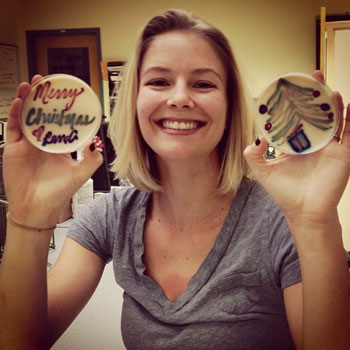
Randi Baldwin
Think the bacteria grown from a poop sample smell like, well, crap? Baldwin says, no way. “I…love the smell of growing Pseudomonas aeruginosa from my poo cultures,” she says. “[It] smells like sweet grapes.” Baldwin used to work in a microbiology lab — a place where scientists study tiny organisms such as bacteria, viruses and fungi. Now, she’s a full-time high school science teacher at T.C. Roberson High School in Asheville, N.C. She teaches physics, earth science and biology.
Savanna Barry
Many kids might think that marine biology means studying dolphins or whales. To Barry, it means studying grass. Seagrass. Many different things live in the marine environment, after all. That includes seagrass.
Barry is a marine biologist at the University of Florida Institute of Food and Agricultural Sciences Extension – Florida Sea Grant in Cedar Key, Fla. Her work, like much of marine biology, involves a lot of swimming. Sometimes it takes scientists deep enough that they need to use SCUBA gear. So Barry is also a SCUBA divemaster with more than 300 logged dives. Check a video about her work below.
Seagrass Savanna from Michael Crandall on Vimeo.
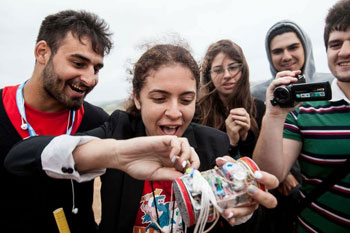
Maria Christoforaki
There’s no age limit on a love of science. Christoforaki is a high school student at the Lyceum of Gazi in Greece. In June, she was part of a team from her school that competed in the European Cansat Competition. This is a contest in which teams build models of satellites. The catch? The satellite has to be the size and shape of a soft drink can. A lot of creativity is required — and Christoforaki says that is the best part. “Each moment I create,” she says, “I feel like I am free.”
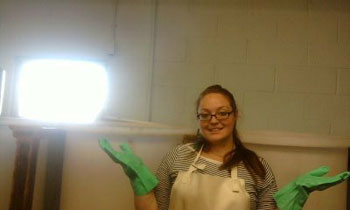
Christina Colgan
Colgan calls herself a “super fun marine and physical science teacher” at Heritage High School in Palm Bay, Fla. But before she was a teacher, she embraced the gross side of science. How gross? She once had an internship cleaning clam poop off clams so the bivalves didn’t suffocate.
ReBecca Hunt-Foster
Hunting dinosaurs that have been dead for millions of years might seem easy — they can’t exactly go far, after all. But it takes a lot of time and a lot of patience. Hunt-Foster knows how much time it takes. She’s a paleontologist — a scientist who studies ancient, fossilized organisms. She works for the Bureau of Land Management in Moab, Utah.
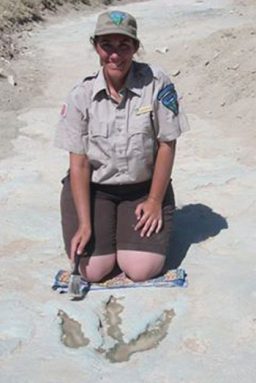
Paleontologists hunting dinosaurs — as Hunt-Foster does — can spend large amounts of time in the field digging up fossils. Then they’ll spend more time in the lab, cleaning and studying their finds. Hunt-Foster is helping to make sure that all that work time doesn’t interfere too much with scientists’ lives. She and other paleontologists are trying to find solutions to improve work/life balance, especially for scientists who are early in their careers. Hunt-Foster does bring her work home with her, though. But that’s so that she can share her love of the outdoors with her own family. “I have two kids that I love to take out into nature,” she says. “We love to go for family road trips to collect fossils, or for hikes and walks in the mountains or along desert creeks.”
Kelly Knight
People who fight crimes don’t always wear capes or badges. Sometimes they wear lab coats. Knight is a forensic scientist — someone who uses scientific techniques to help solve crimes. She’s a professor at George Mason University in Fairfax, Va. But that’s not all she does. “I’m also a Zumba instructor and I have my motorcycle license,” she says. She’s still working on getting a motorcycle, though.
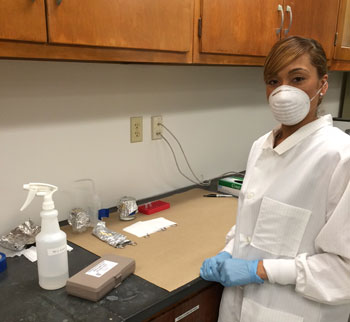
Vanessa Lucieer
Have you ever seen a map of the ocean showing that some parts are deeper than others? How do we know how deep the ocean is? In some cases, the ocean is far too deep to measure with a long line. Another method is needed to figure out depth. Lucieer instead makes maps of the seafloor using sound waves. She works at the Institute for Marine and Antarctic Studies at the University of Tasmania in Australia.
Now Lucieer is also using those sound waves and maps to make art. She presented her first exhibition in August 2016. She’s been working with other scientists around the world to share images made with sound data, she explains, “so that we can share the wonder of shapes, patterns and textures of how unique our oceans are.”
Sara MacSorley
Not everyone who loves science wants to end up in a lab. “No one ever told me you could be more than a research scientist with a science degree, so when I discovered research wasn’t the career for me, I freaked out,” says MacSorley. Luckily, there’s a lot you can do with a degree in science outside of the laboratory! MacSorley is now the director of the Green Street Teaching and Learning Center at Wesleyan University in Middletown, Conn. She spends her time promoting outreach and education.
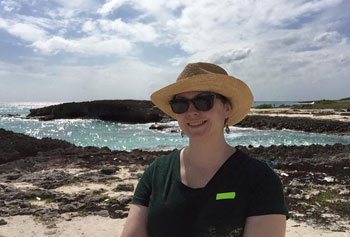
She still loves science. MacSorley is now working on a coloring book about women in science, technology, engineering and math. She’s already raised more than $8,000 for her project. So keep an eye out for the coloring book Super Cool Scientists, coming out soon!
Christine Sharp (picture at top)
Sharp is one of the scientists trying to find new ways to put gasoline in our cars or heat our homes — using microbes. She’s a scientist at the University of Calgary in Alberta, Canada. She’s looking for bacteria in extreme environments such as highly alkaline lakes. No animals can live there. But bacteria can. Sharp wants to know if any of these bacteria might be used to make biofuels — liquids that could replace gasoline.
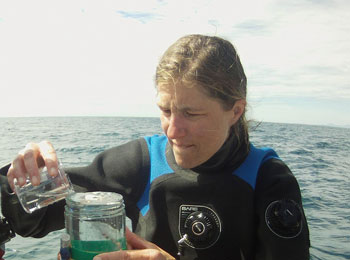
Kelly Sutherland
Jellyfish in aquariums seem like they float, rather than swim. Somehow, they manage to get around the ocean anyway. Sutherland studies just how these organisms interact with their watery environment. She’s a marine scientist at the Oregon Institute of Marine Biology at the University of Oregon in Eugene. For someone who spends so much time on the water, though, she’s got an unfortunate weakness: Sutherland gets seasick.
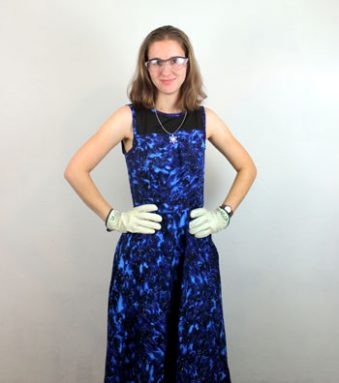
Erin Winick
If you love science and fashion, you’re not alone. Winick is a student in mechanical engineering at the University of Florida in Gainesville. In her career as an engineer, she says, she’s had to do everything “from crawling under houses to look at structural damage to learning to drive a tractor!”
But she also runs her own company, Sci Chic, making science- and engineering-inspired jewelry. Her science creativity also goes beyond jewelry. “I love sewing and have made everything from a Ms. Frizzle costume to a galaxy-patterned dress,” she says. “I love making and wearing any all space- and science-inspired clothing.
We hope you enjoyed our series highlighting inspiring women in science, technology, engineering and math! If you liked this one, make sure to check out our other lists including astronomy, biology, ocean science, biomedicine, math, earth science, ecology, chemistry and neuroscience.
Follow Eureka! Lab on Twitter